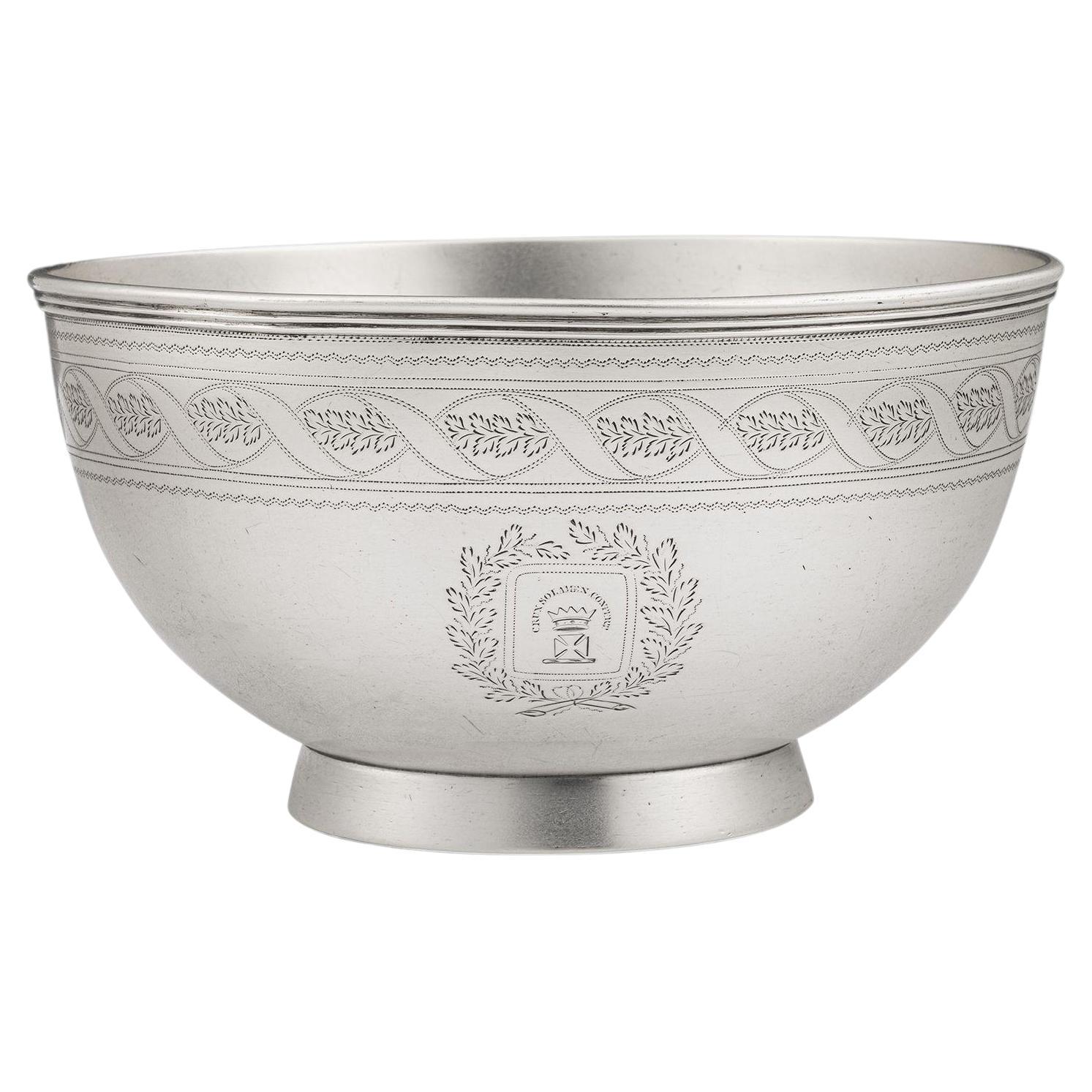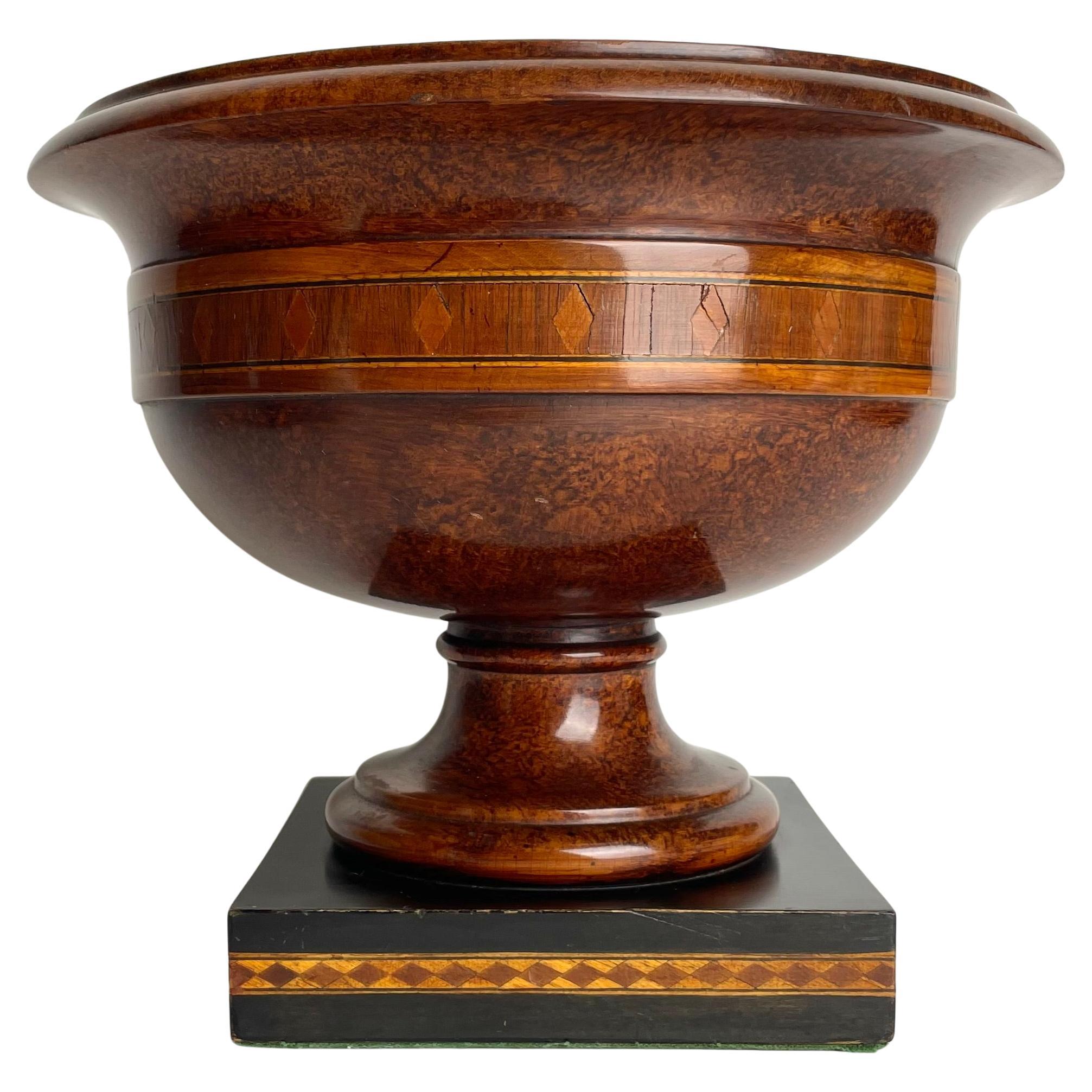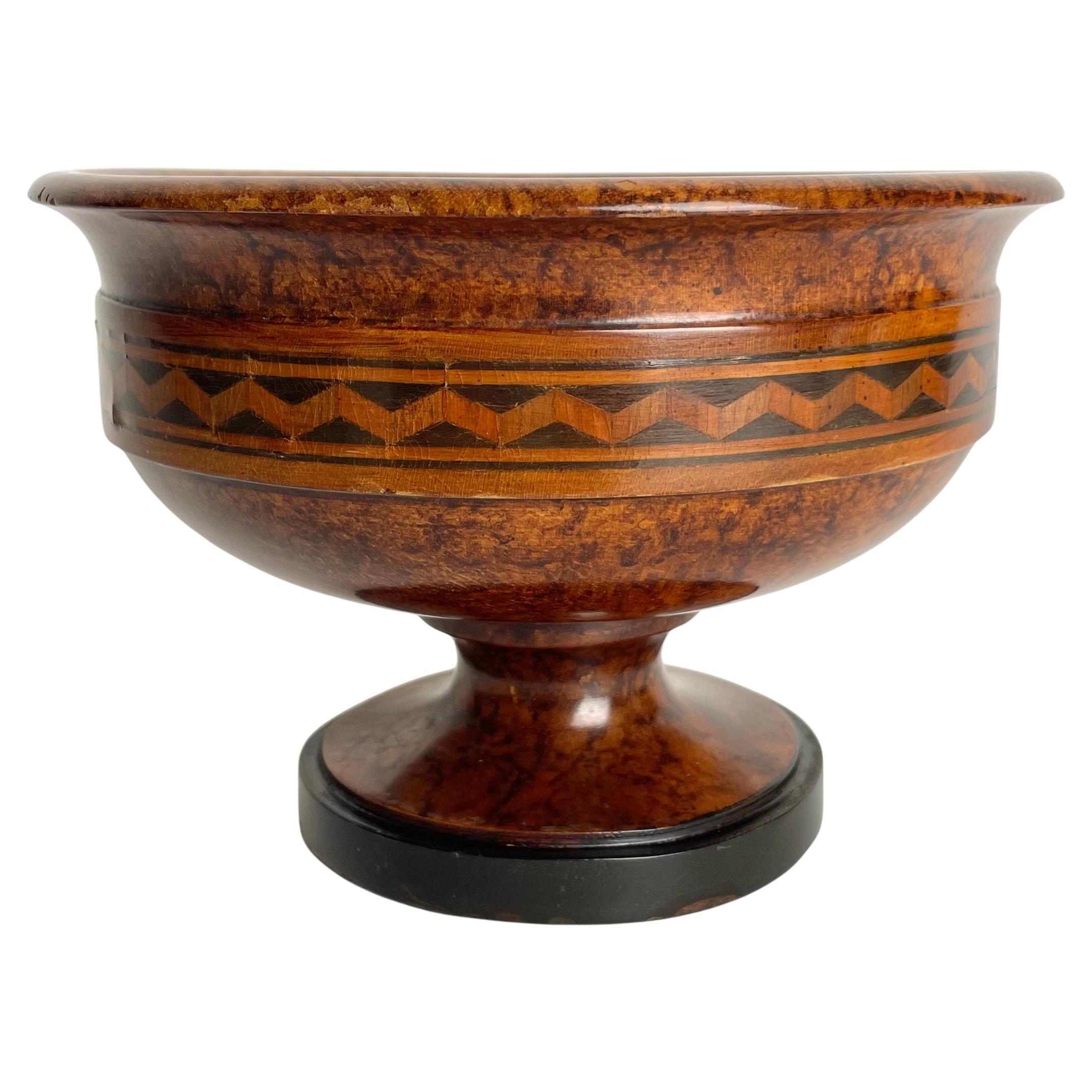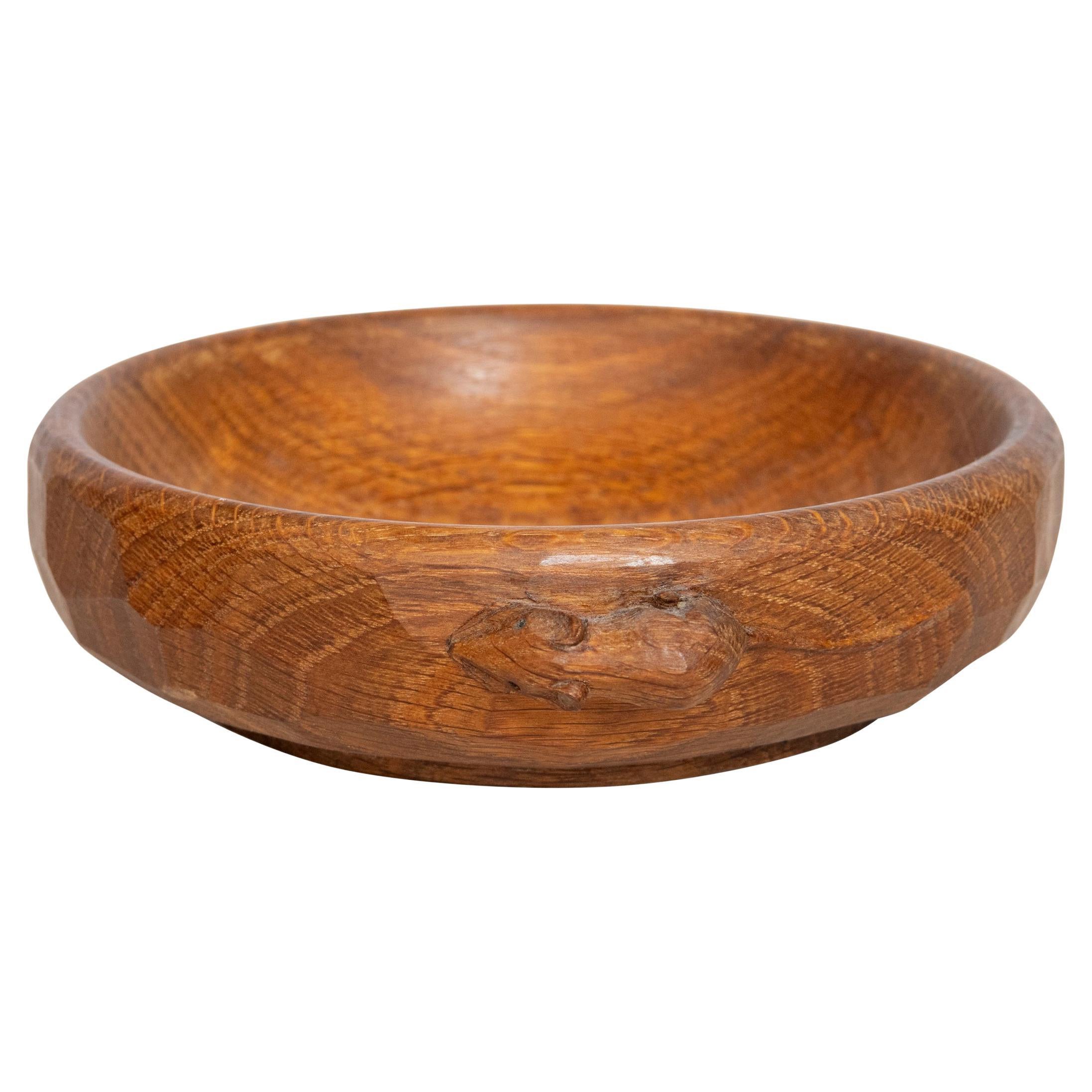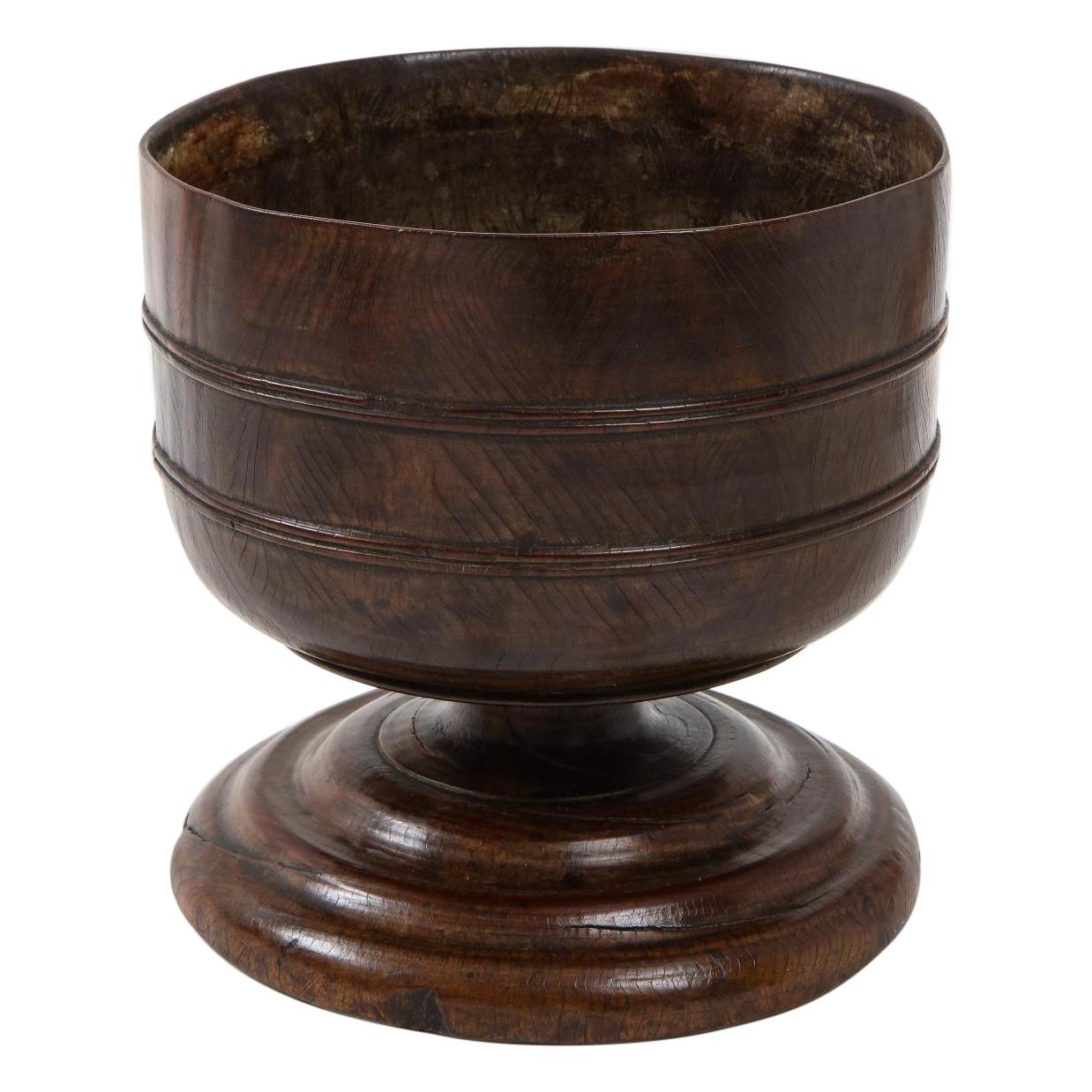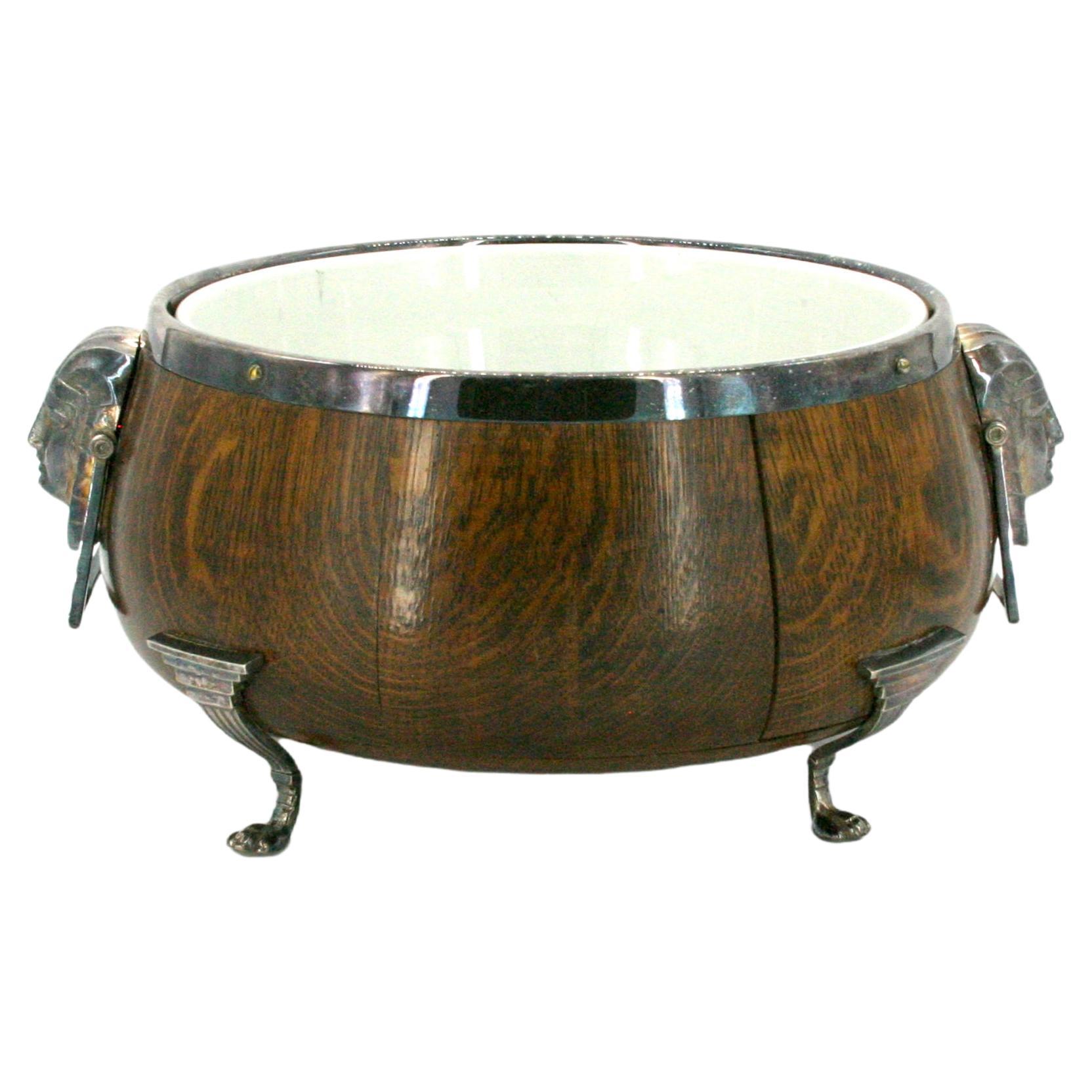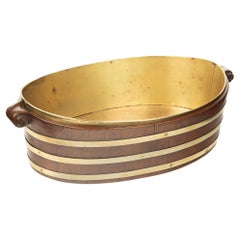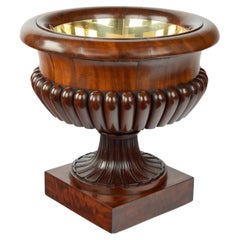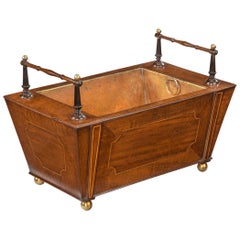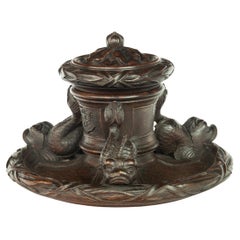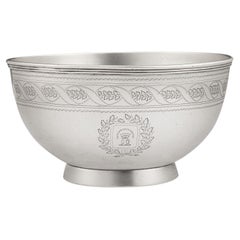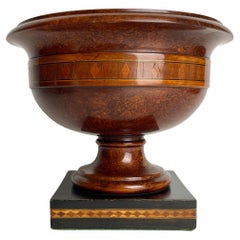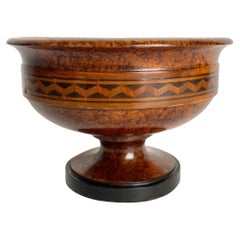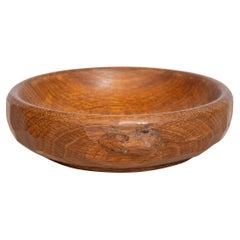Items Similar to George III Punch Bowl Made of Oak from H.M.S. Royal George, 1802
Want more images or videos?
Request additional images or videos from the seller
1 of 5
George III Punch Bowl Made of Oak from H.M.S. Royal George, 1802
$10,704.02
£7,800
€9,171.16
CA$14,779.31
A$16,389.16
CHF 8,611.29
MX$200,247.72
NOK 107,738.98
SEK 101,131.44
DKK 68,464.53
About the Item
This turned commemorative oak bowl is of deep cylindrical form applied with a silver shield-shaped plaque inscribed ‘H.M.S. Royal George. (108 Guns) Capsised 29th Augst. 1782. This Punch Bowl was turned from a beam of Admiral Kempenfelts cabin, by James Gerrard. 1802.’
The Royal George was commissioned at the start of the Seven Years War (1756-1763). After serving with distinction, Rear Admiral Richard Kempenfelt was due to relieve Admiral Howe in Gibraltar, 1782. The 100-gun, first-rate ship of the line anchored at Spithead to carry out essential work on the cistern pipe. Once heeled onto one side, the vessel took on water through the gun ports, capsized and quickly sank in the Solent. This naval disaster holds significant importance in British naval history. Having been denied shore leave, several of the crew's visiting families and dignitaries were among the casualties, which exceeded 900 in total. A controversial court martial acquitted the crew and officers of any wrongdoing and tainted the reputation of the Navy Board. The masts of the wreck remained visible from the shoreline as late as 1794, serving as a macabre reminder of the tragedy. Prompted by local sailors, a series of pioneering dives by Charles and John Deane recovered much of the Royal George's timber and cannons, including a bronze cannon which later formed part of Nelson's column. The masts and beams were reimagined into household items and souvenirs. The wreckage was destroyed in 1840 by the Royal Engineers in a controlled explosion.
This turned commemorative oak bowl is of deep cylindrical form applied with a silver shield-shaped plaque inscribed ‘H.M.S. Royal George. (108 Guns) Capsised 29th Augst. 1782. This Punch Bowl was turned from a beam of Admiral Kempenfelts cabin, by James Gerrard. 1802.’
The Royal George was commissioned at the start of the Seven Years War (1756-1763). After serving with distinction, Rear Admiral Richard Kempenfelt was due to relieve Admiral Howe in Gibraltar, 1782. The 100-gun, first-rate ship of the line anchored at Spithead to carry out essential work on the cistern pipe. Once heeled onto one side, the vessel took on water through the gun ports, capsized and quickly sank in the Solent. This naval disaster holds significant importance in British naval history. Having been denied shore leave, several of the crew’s visiting families and dignitaries were among the casualties, which exceeded 900 in total. A controversial court martial acquitted the crew and officers of any wrongdoing and tainted the reputation of the Navy Board. The masts of the wreck remained visible from the shoreline as late as 1794, serving as a macabre reminder of the tragedy. Prompted by local sailors, a series of pioneering dives by Charles and John Deane recovered much of the Royal George’s timber and cannons, including a bronze cannon which later formed part of Nelson’s column. The masts and beams were reimagined into household items and souvenirs. The wreckage was destroyed in 1840 by the Royal Engineers in a controlled explosion.
James Gerrard of Lymington (fl.1800-1830)
It is possible that we have discovered a little more about James Gerrard, the maker of the bowl according to the attached plaque. There was a James Gerrard, chairmaker and turner, operating in our local town of Lymington in Hampshire around the turn of the 19th century. The BIFMO entry for Gerrard, taken from the Dictionary of English Furniture Makers 1660-1840, describes him as flourishing around 1830. However there are documents surviving in Dorset Record Office that add significantly to this picture. In 1800 and 1801 Gerrard signed apprenticeship agreements, taking two young men from the workhouse (namely George Pond and George Green respectively) under his tutelage. Given that our bowl was made in 1802, this is very significant. Even more interesting perhaps is another document in the record office's collection and dating from 1803. This is a
'Printed Order of the Lords of the Admiralty to James Gerrard, Constable of Lymington, empowering him to impress seamen for service in the navy'.
If, as seems likely, this is the same James Gerrard then he obviously had links to the navy as well which could explain his acquisition of naval timbers used to make the present punch bowl.
About the Seller
5.0
Recognized Seller
These prestigious sellers are industry leaders and represent the highest echelon for item quality and design.
Gold Seller
Premium sellers maintaining a 4.3+ rating and 24-hour response times
Established in 1982
1stDibs seller since 2013
133 sales on 1stDibs
Typical response time: 2 hours
Associations
LAPADA - The Association of Arts & Antiques Dealers
- ShippingRetrieving quote...Shipping from: Lymington, United Kingdom
- Return Policy
Authenticity Guarantee
In the unlikely event there’s an issue with an item’s authenticity, contact us within 1 year for a full refund. DetailsMoney-Back Guarantee
If your item is not as described, is damaged in transit, or does not arrive, contact us within 7 days for a full refund. Details24-Hour Cancellation
You have a 24-hour grace period in which to reconsider your purchase, with no questions asked.Vetted Professional Sellers
Our world-class sellers must adhere to strict standards for service and quality, maintaining the integrity of our listings.Price-Match Guarantee
If you find that a seller listed the same item for a lower price elsewhere, we’ll match it.Trusted Global Delivery
Our best-in-class carrier network provides specialized shipping options worldwide, including custom delivery.More From This Seller
View AllA late Georgian brass bound mahogany oyster bucket
Located in Lymington, Hampshire
A late Georgian brass bound mahogany oyster bucket, of oval form with three brass bands, wooden volute handles and the original brass liner. English, 1810.
Category
Antique Early 19th Century English Nautical Objects
Materials
Brass
A fine George IV mahogany wine cooler attributed to Gillows
By Gillows of Lancaster & London
Located in Lymington, Hampshire
A fine George IV mahogany wine cooler attributed to Gillows, in the form of a classical urn with everted lip and boldly gadrooned sides, set upon a flaring, flanged support with flut...
Category
Antique 1810s English George IV Wine Coolers
Materials
Mahogany
George III Fiddleback Mahogany Table Jardinière
Located in Lymington, Hampshire
A George III fiddleback mahogany table jardinière, of sarcophagus form with two turned handles on tapering supports, decorated with shaped panels of plain mahogany within Fine boxwoo...
Category
Antique 1810s English Planters and Jardinieres
Materials
Mahogany
An oak inkwell carved from Lutine timber, dated 1799
Located in Lymington, Hampshire
This large and historically interesting inkwell, or standish, is carved from timber recovered from the wreck of H.M.S. Lutine. It has a central inkwell, with a bud and oakleaf cover...
Category
Antique 1860s English Nautical Objects
Materials
Oak
A Rare and Historically Interesting George IV Period Snuff Box Made from Oak
Located in Lymington, Hampshire
This fine box is one of a small number of souvenir pieces of this kind made from timbers salvaged during the refurbishment of Windsor Castle in the 1820s. What makes this piece parti...
Category
Antique 19th Century English George IV Snuff Boxes and Tobacco Boxes
Materials
Oak
Large William IV Fiddleback Mahogany Cellaret
Located in Lymington, Hampshire
A large William IV fiddleback mahogany cellaret of sarcophagus form, the hinged lid enclosing a twin handled brass liner, with projecting scrolled acanthus carved canted angles, on f...
Category
Antique Mid-19th Century English William IV More Furniture and Collectibles
Materials
Mahogany
You May Also Like
George IV Table Bowl Made in Edinburgh by Leonard Urquhart, 1829
Located in London, GB
An Extremely Fine George IV Table Bowl, Most Probably for Fruit, Made in Edinburgh in 1829 by Leonard Urquhart.
The Bowl stands on a flared circular ring foot. The slightly baluster...
Category
Antique 19th Century Scottish George IV Decorative Bowls
Materials
Silver
A large Grand Tour grained beech pedestal bowl from the 19th Century
Located in Knivsta, SE
A large and beautiful Grand Tour grained beech pedestal bowl from the 19th Century. Decorated with a band of inlay and raised on a square plinth base.
Wear consistent with age and use
Category
Antique 19th Century European Decorative Bowls
Materials
Beech
A Grand Tour grained beech pedestal bowl from the 19th Century
Located in Knivsta, SE
A beautiful Grand Tour grained beech pedestal bowl from the 19th Century. Decorated with a band of inlay and raised on a round plinth base.
Wear consistent with age and use
Category
Antique 19th Century European Decorative Bowls
Materials
Beech
Small Oak Bowl by Robert Thompson, England circa 1960
By Robert Thompson
Located in Knutsford, GB
Small Oak Bowl by Robert Thompson
Also know as "The Mouseman"
Oak. Adzed.
Mouse signature to side.
English. Circa 1960.
15.5 cm diameter x 5 cm high
Category
Vintage 1960s Decorative Bowls
Materials
Oak
Lignum Vitae Wassail Bowl
Located in Greenwich, CT
A wonderful and large turned lignum vitae wassail bowl, England circa 1680
Wassail bowls were first mentioned in the 13th century as a vessel in which rev...
Category
Antique Late 17th Century English Charles II Decorative Bowls
Materials
Wood
$14,500
Old English Oak / Porcelain Centerpiece Bowl
Located in Tarry Town, NY
Old English oak barware / tableware serving footed bowl with silver plated frame and sphinx figural side handles. The bowl features a white ceramic int...
Category
Antique 1860s English Edwardian Barware
Materials
Copper
$1,200 Sale Price
20% Off
More Ways To Browse
British Royal Navy
Antique Punch Bowl
Shield Plaque
Antique Nautical Prints
George III Silver Collectibles
Used Cistern
George Iii Silver Service
Silver Cannon
Royal Commemorative
Antique Ships Cannon
Antique Macabre
Antique Cisterns
English Prints 1800s
Antique Oak Beams
Naval Cannon
Nelson And Nelson Antique Silver
Admiralty Anchor
Gibraltar Antiques
